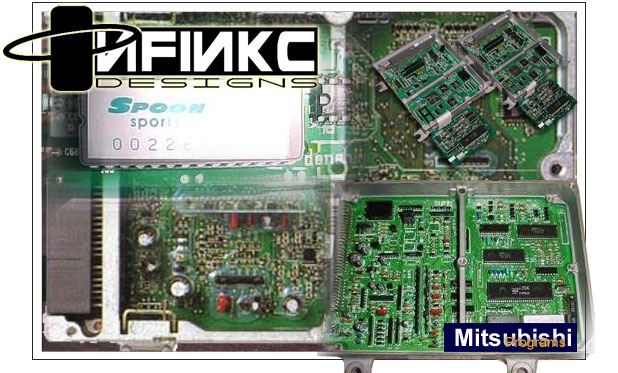|
·
Can we swap all ECU?
· Which ECU can be swapped?
· What other modification needed?
OBD2 to OBD1 conversion on 97+ Honda Prelude
This is what you will need: OBD1 distributor from 93-95 Prelude VTEC
(will need to re-wire) OBD1 ECU from either 93-95 Prelude VTEC (P13)
or 94-95 Integra GS-R (P72) OB2 to OBD1 harness converter (same as Integra
and Civic owners use)
If you use a OBD1 Prelude ECU, you will need to use OBD1 Prelude injectors
(320cc vs. 290cc for the OBD2 injectors). You will also need to wire
in the resistor pack for the injectors from the OBD1 Prelude..
=-6/e used a GS-R ECU chipped to H22A specs, with the fuel and timing
optimized.
Why you want to do this
We gained 5-8 hp all the way across the rpm range with this new ECU.
The main benefits to doing this mod is that you are able to have the
ECU reprogrammed. No ECU tuner that I know of can do the OBD2 Prelude
ECU. The main benefit is that fuel modifications from a controller and
such will work a lot better with this ECU. It's also nice to have a
8500 rpm rev limit. You can also alter timing advance (for NA) or retard
(for FI).
Some things to consider when doing this modification
The ECU is larger, so you need to modify the ECU holder. I just cut
the middle leg off of mine, and drilled some holes and mounted it. Also,
this means no ATTS (for SH owners) or Immobilizer system.
Distributor wiring You need to re-wire for the distributor. The TDC
and CKP sensors are located at the crank on the 97+ Prelude. On the
OBD1 Prelude, these sensors are located in the distributor. This is
why you cannot alter timing on a 97+ Prelude. You need to re-wire these
sensors, so that the ECU reads them from the distributor. The wiring
is as follows: (coming soon...)
|
|
Question
regarding DSM ECU:
·
Can we chip all DSM ECU?
· Which year model has EPROM?
· How can we tell from the ECU cover?
The key for hunting down EPROMs after *1990* is to look for an 'E' in
the lower right corner of the label on the top (not the sides). Yes,
it is that easy. If you have an 'M' or 'T', you are out of luck. For
1990, you have to open up the ECU. There is no correlation between build
dates or models or anything else that I've been able to absolutely verify.
Be careful of rebuilt ECUs. The rebuilders that I know of do a good
job of fixing the ECUs, but sometimes, they get the topcovers mixed
up. The only way to know for CERTAIN that an ECU has an EPROM is to
just open it up.
BTW, part numbers mean nothing. I've seen the same Mitsu part number
on an EPROM ECU as a non-EPROM ECU...
In 1990, they have different code revs for CA smog and Fed smog. They
also have no E/M markings on the ECU case. Possibility that all CA cars
have EPROMs due to low run amount compared to Federal cars? Possibility
that all 1990 cars have EPROMs (since none are marked)?
In 1991, code is tightened considerably, table sizes are reduced, and
they are able to squeeze all versions of the turbo code into one ECU.
First ECUs to be marked with E/M. Definitely a LOT of non-EPROM ECUs,
but a lot of EPROM ECUs are also out there.
In 1992, there are no code changes made. Possible that there are no
1992 cars with EPROMs?
In 1993, code is changed to meet new regulations on fuel vapor recovery.
New code generally means EPROMs are available (at least until 1996).
In 1994, code is changed for minor smog enhancements (probably). Also,
all cars made from this year forth carry CA smog equipment (meaning
a better EGR system).
In 1995, code goes through 5 running changes during the year as Mitsu
engineers struggle to get OBDII right (I'm guessing). First three revs
of code appear to be AWD only (no speed limiter). Likely that there
are nothing but EPROMs in this year?
I have never gotten a 1996 ECU to modify, so I suspect that there is
not an EPROM available at all in this year? Probable that a 95 ECU will
run a 96 car, though.
I have a 1997 ECU. It is marked with a 'T'. No EPROMs this year that
I know of?
1998 and 1999 are suspected to be a radically different ECU. I do not
have one on hand, nor have ever seen one. I'm certain that there are
no EPROM ECUs available after 1996.
Galant GVR-4s are a special case. They have always idled at a slightly
higher speed and had different variables due to different gearing. Some
even had a slightly different MAF. Anyhow, their low volume GUARENTEES
EPROM availability.
|



